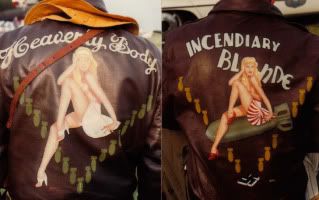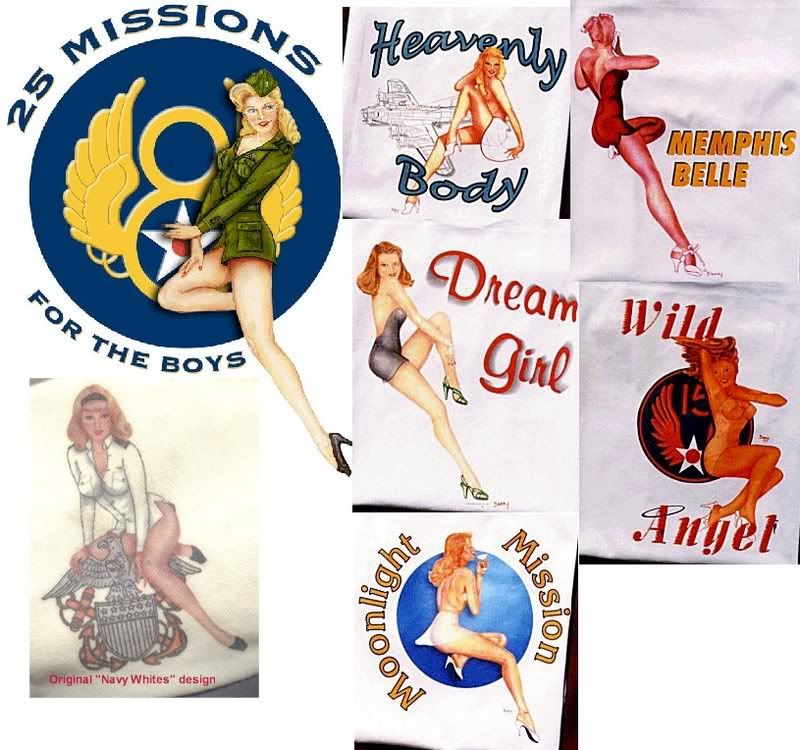Yes agreed. I painted jackets back in the 80s and 90s thru to about 2000. I'd like to think I pioneered the stripping of the oils out of the area to be painted. Avirex were the jacket of choice back then and they had enough oil in them to lube your car, so you had to get that out. By essentially using a frisket method you could confine the stripping to the exact area to be painted. Specifically the main design feature--pin up, plane or whatever. I was less worried about kill marks or clouds or bombs.
One early customer called after receiving his jacket and said there was a problem....the girl had a crack in her *ss. I said that most people do....and he said the problem is that it ran left to right! That is when I learned that all cows are not created equal. The stripping helped reduce those major crevices and helped the paint stick. I also would put in a thin base coat of white to allow the colors to come back true rather than tan tinged. I used Polly-S acrylics thinned with Ethyl alcohol.
I also recall that famed nose artist Tony Starcer painted several A-2s during the return of Shoo Shoo Baby to the USAFM. He painted great designs on new production A-2s and those fell off within a year. He didn't strip the coats.
BTW I asked a wartime jacket painter once why everybody outlined their designs in black. He said they NEVER outlined their designs in black...what you are seeing is the outline of the clear coat they put on to seal in the art. I don't remember if he said lacquer or varnish. What I took away from that is that they did do overcoating. I used to use matte spray again confined to the original frisketed area.


My jacket on the left and a good friends on the right. Our jacket of choice back then was Flight Apparel out of NJ....now gone I believe. Here are some T-shirt designs I did back in the 90s....






